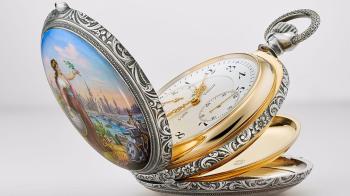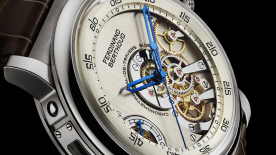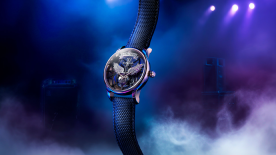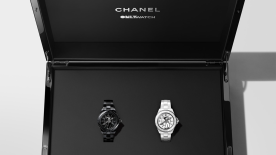One of A. Lange & Söhne’s most famous and valuable pocket watches has returned to its place of origin, the Museum Bautzen, where it had been lost in the turmoil at the end of the Second World War. The elaborately designed gold hunter case with the artfully enamelled painting of the goddess Minerva is one of only a few tourbillons from the traditional Glashütte manufactory. The watch with the No. 41000 presented by Emil Lange at the 1900 Paris world fair went down in history as “centennial tourbillon”
Known as the “centennial tourbillon”, the pocket watch No. 41000 from 1900 plays a key role in the history of A. Lange & Söhne. The manufactory began producing tourbillons in 1892. According to Martin Huber’s standard reference work Die Lange Liste (Eng. The Lange List), which covers all of the manufactory’s complicated pocket watches from 1866, twelve tourbillons were described between 1892 and 1925. However, only nine of them also have deliveries documented. A particularly magnificent example and a technical sensation is number 41000. Its calibre combines a one-minute tourbillon with a fusée-and-chain transmission. It also features the UP/DOWN power-reserve indicator characteristic of Lange watches.
A momentous inspiration
This timepiece, which is extraordinary in every respect, inspired Walter Lange and Günter Blümlein to develop the TOURBILLON “Pour le Mérite” after the re-establishment in 1990. With this groundbreaking watch, the manufactory had succeeded for the first time in creating the same combination of contemporary watchmaking complications in a smaller wristwatch format. In doing so, A. Lange & Söhne proved that the brand had regained its former leading position in precision watchmaking. Since its premiere in 1994, the TOURBILLON “Pour le Mérite” has been one of the most fascinating wristwatches in the world. It is considered to be one of the most sought-after pieces among collectors and regularly achieves top prices at auctions.

Big appearance in Paris
The pocket watch No. 41000 was first delivered in 1900 to the Saxon court jeweller Paul Thimig in Dresden, who sold it to Otto Weigang, owner of a Bautzen printing house, at a price of 1,500 gold marks. The entrepreneur owned a collection of important pocket watches and also had business relations with the former manufactory A. Lange & Söhne. In his chromolithographic art institute, particularly high-quality advertising materials were printed for many Saxon manufactories at the time. Before the watch was delivered, Emil Lange, the second-generation sole owner of the company from 1887, took the watch as a showpiece to Paris, where he had been appointed to the jury of the 1900 world fair as a member of the international jury.
Homage to science and art
This is probably why Emil Lange had the watch lavishly equipped. The platinum-plated gold case was artfully decorated with engravings in the Neo-Renaissance style. The polychrome enamelled miniature on the front shows an allegorical representation of the Roman goddess of wisdom Minerva next to a globe. In her left hand, the patron saint of merchants, craftsmen and artists holds an olive branch as a symbol of peace and in her right a laurel wreath as a symbol of victory, thus representing faith in the victory of peace through economic and scientific progress. The background refers to the occasion for which this watch was created. One can clearly see the country pavilions lined up especially for the purpose of the world fair on the “Quai des Nations”, now known as the Quai d’Orsay. The engraving of a rising sun above the sea represents the beginning of a new era – the 20th century, which was being awaited with great hope. As Emil Lange himself was a member of the jury, he was only able to show the watch outside the competition, where it generated a great deal of attention among experts. In recognition of his work as a juror and his exceptional watchmaking achievement, he was subsequently named Knight of the French Legion of Honour in 1902.
A turbulent history
After the death of Otto Weigang in 1914, the centennial tourbillon passed into the possession of the Museum Bautzen, together with other pocket watches and works of art from his extensive collection. In the post-war turmoil, the precious timepiece disappeared from an external depot in 1945 where parts of the collections had been brought to safety from being bombed. Afterwards, all traces of it were lost until it was presented again at the legendary special exhibition of exceptional Lange pocket watches initiated by Martin Huber in 1976. "I am very grateful to Martin Huber for organising this exhibition. He played a major role in bringing the Lange name back into the consciousness of all those who have not lost their belief in and fascination with these unique mechanical watches," explained Walter Lange after the new start in 1990.
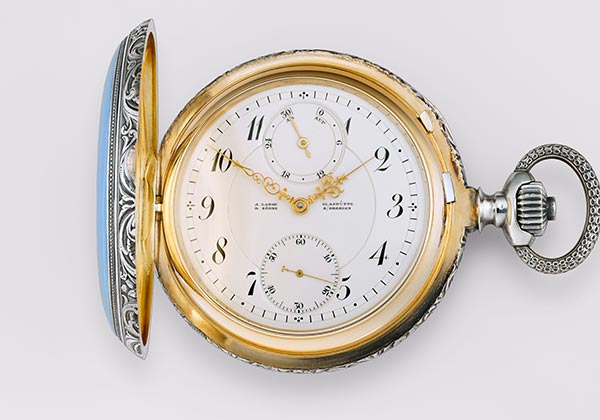
Since then, the pocket watch No. 41000 has been auctioned several times. However, the most recent auction at Sotheby’s in London in spring 2019 was not to take place. The town of Bautzen contacted the auction house and decided to buy back the watch in view of its outstanding cultural and historical significance. “100 years it was first donated, the watch is now coming back to Bautzen,” said the then Lord Mayor Alexander Ahrens during the ceremony in June 2022: “This is a piece of Saxony’s industrial history, a piece of Bautzen’s history.”
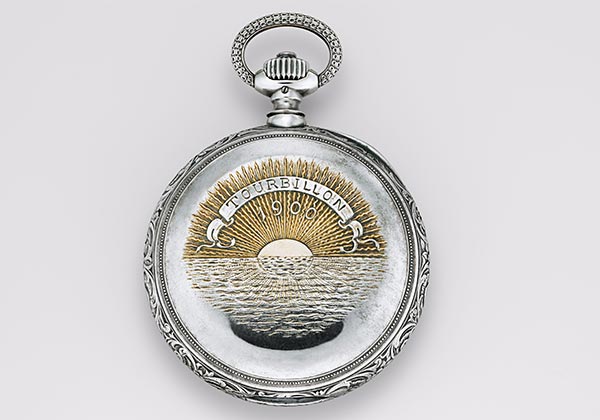
Lange CEO Wilhelm Schmid is delighted about the positive twist in the story: “The return of the centennial tourbillon to the Museum Bautzen’s collection finally makes this unique example of Saxon precision watchmaking accessible to the public again and gives it the attention it deserves. Technically, artistically and in terms of craftsmanship, this watch has set benchmarks and contributed significantly to the historical reputation of A. Lange & Söhne. It is the same standard of technical perfection and supreme craftsmanship with which we continue to develop and manufacture our timepieces today.”
